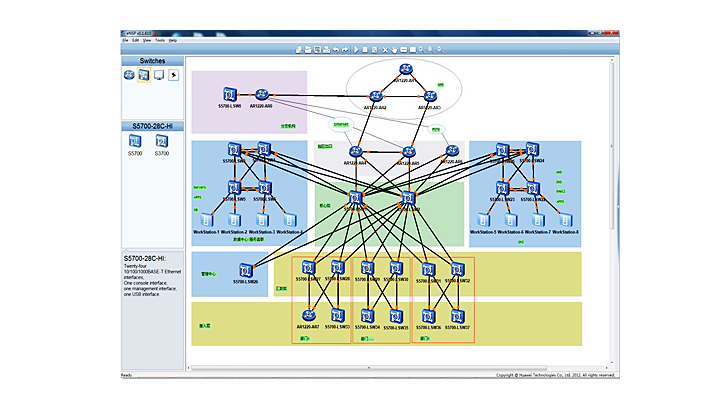Feature
|
Sub-item
|
Description
|
WAN connection
|
WAN interface
|
Ethernet interfaces and synchronous serial interface
|
Logical interface
|
Loopback interface, tunnel interface, and Ethernet sub-interface
|
Link-layer protocol
|
PPP, FR, and HDLC
|
IP application
|
ARP
|
Address resolution for Ethernet
|
IPv4 host
|
IPv4 address management, TCP/UDP socket, ICMP, ping and tracert, and UDP helper
|
DNS
|
DNS client, DNS proxy, and dynamic DNS (DDNS) client
|
VRRP
|
Redundancy backup mechanism for IP services
|
BFD
|
Single-hop and multi-hop BFD, BFD for VRRP, BFD for BGP, and BFD for OSPF
|
DHCP
|
DHCP client, DHCP relay, and DHCP server, and DHCP security
|
IP routing
|
Routing policy
|
Basic routing functions
|
Static routing
|
Basic routing functions
|
RIP
|
Routing protocols
|
OSPF
|
Routing protocols
|
ISIS
|
Routing protocols
|
BGP
|
Routing protocols
|
Multicast
|
Multicast routing
|
Multicast route management, multicast route load balancing, and source-specific multicast (SSM) mapping
|
IGMP
|
Basic IGMP
|
PIM (IPv4)
|
PIM-DM and PIM-SM
|
MSDP
|
Inter-domain (PIM-SM domain) multicast routing
|
MPLS
|
Basic MPLS
|
Static label switched path (LSP), penultimate hop popping (PHP), and MPLS LSP QoS
|
MPLS LDP
|
MPLS LDP
|
L3VPN
|
BGP-based L3VPN connection
|
Security
|
ACL
|
Permit and deny actions
|
VPN
|
GRE VPN
|
Basic GRE functions
|
Network management
|
SNMP
|
SNMP agent, fault management (FM), and trap switch control (TSC)
|
NTP
|
Time synchronization for traditional IP networks
|

